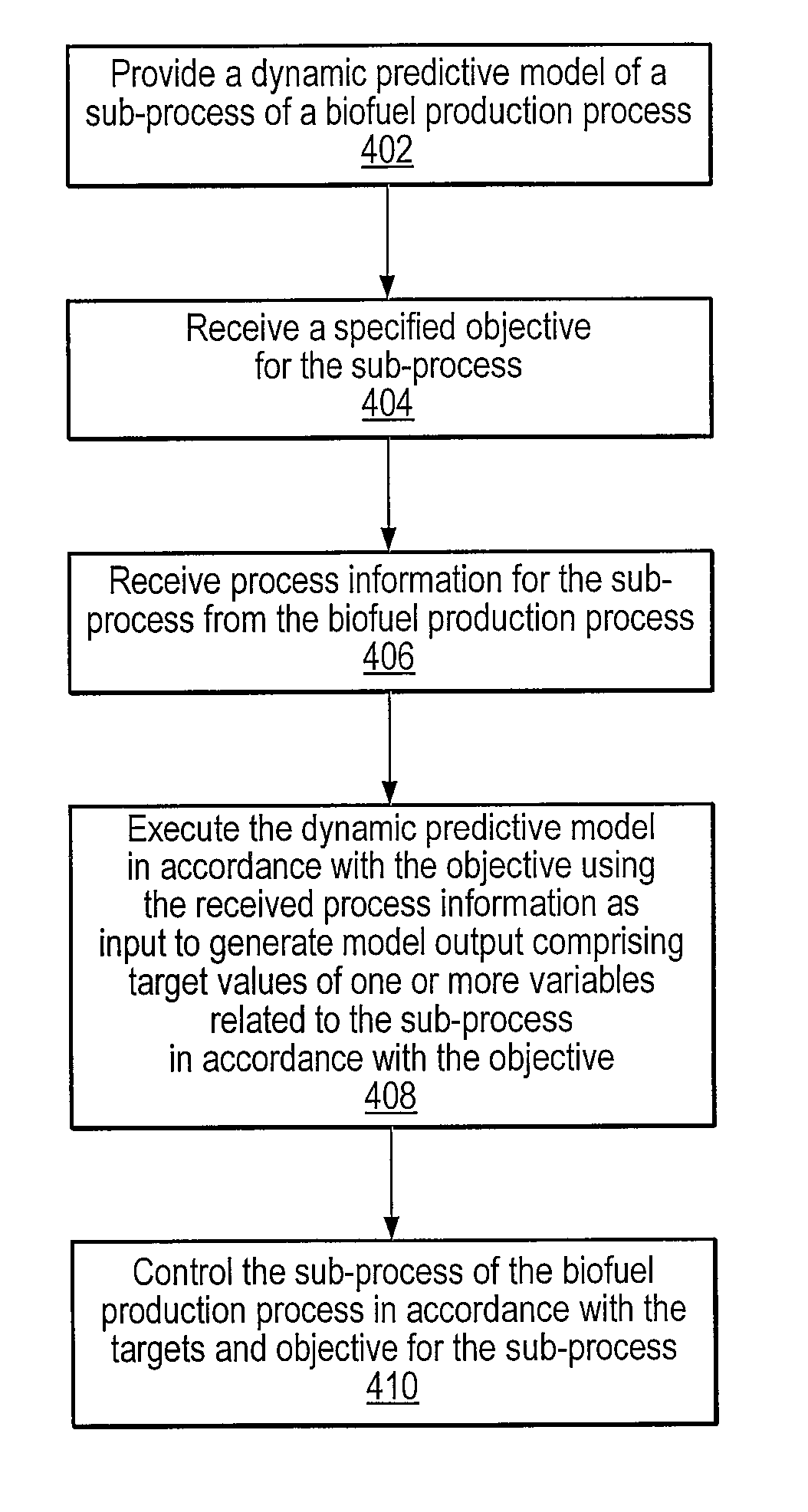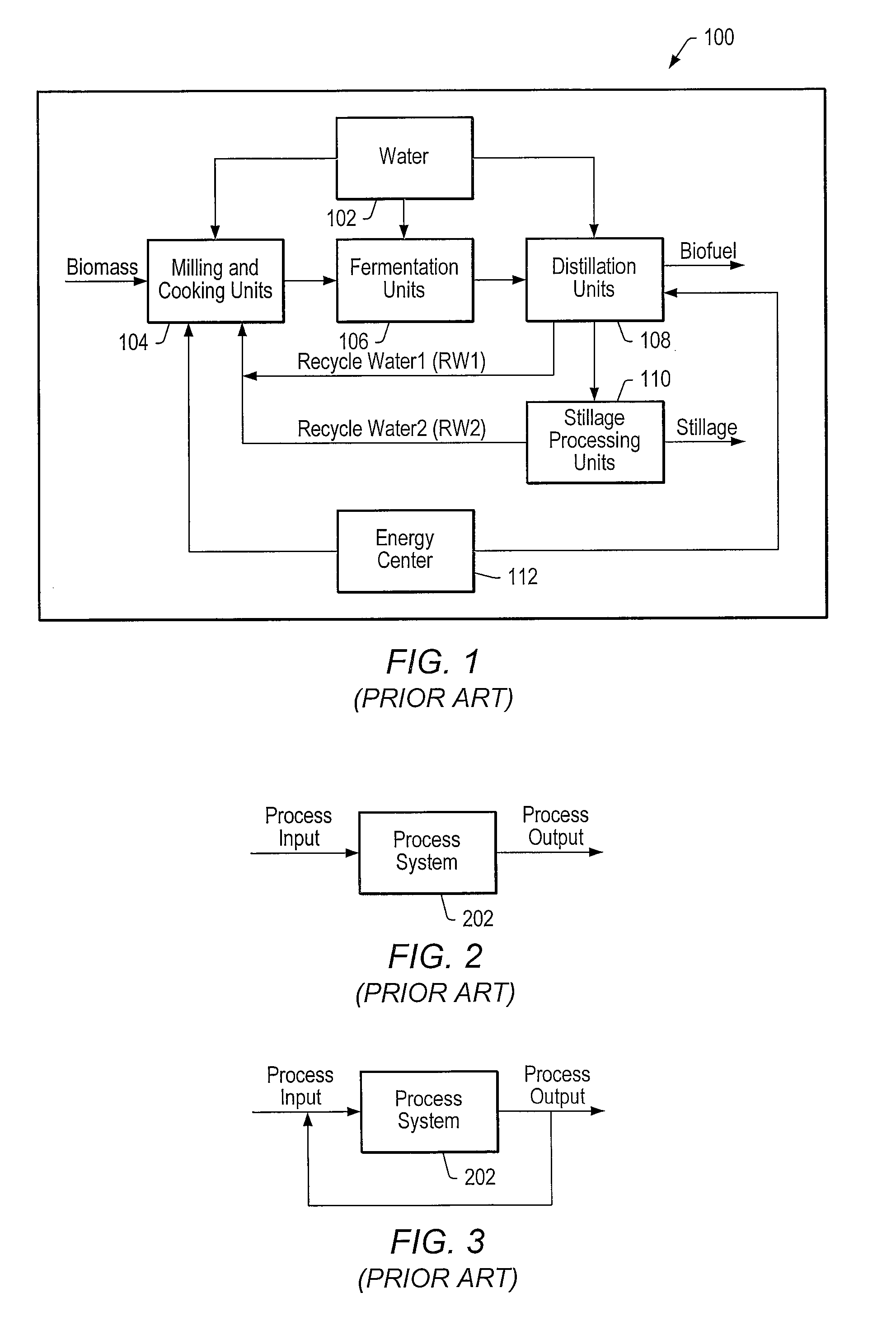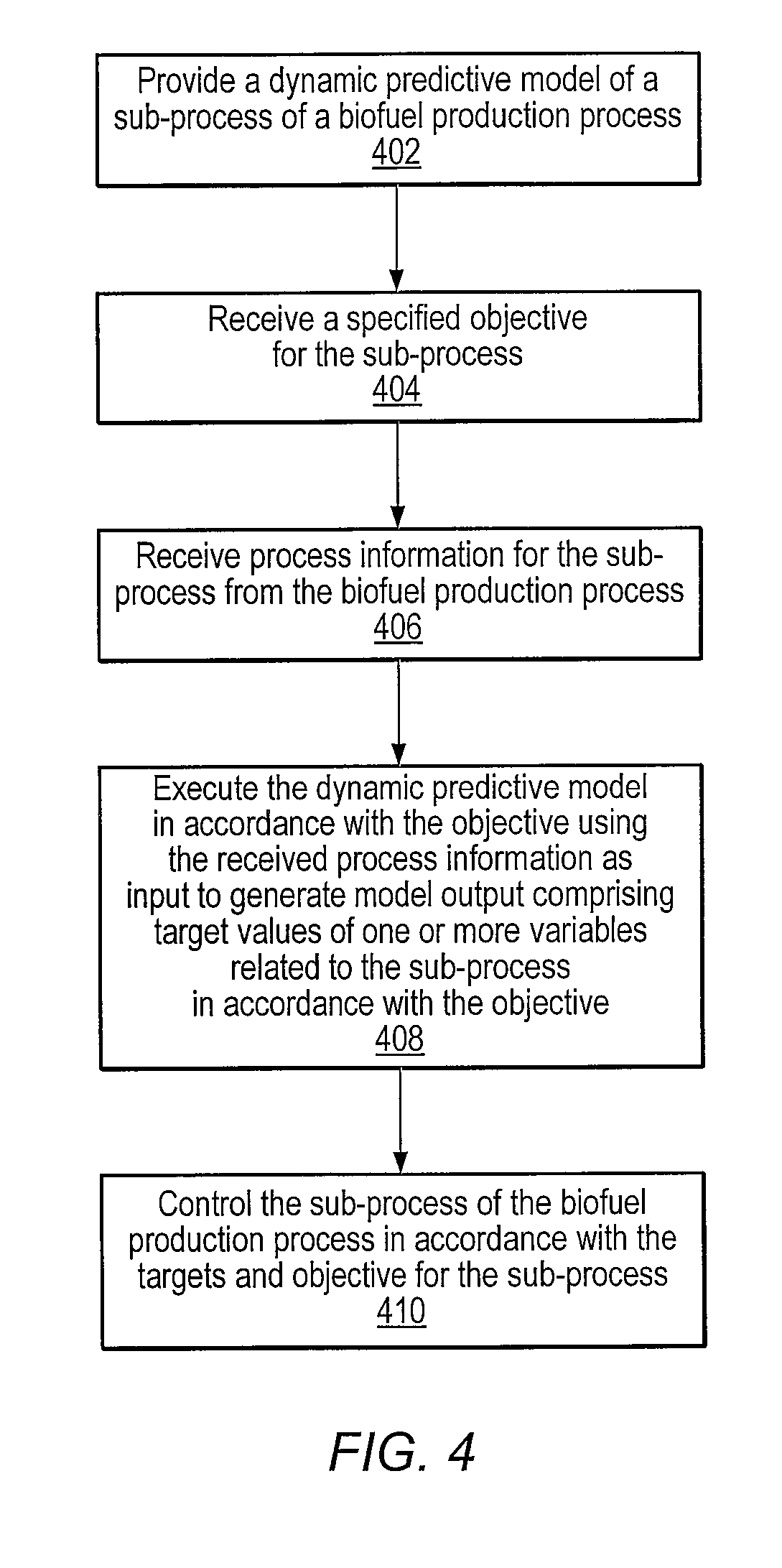Integrated model predictive control of batch and continuous processes in a biofuel production process
a biofuel production process and model predictive control technology, applied in process and machine control, analogue processes for specific applications, instruments, etc., can solve the problems of high plant failure rate, poor business judgment, inefficient engineering design, etc., and achieve the effect of minimizing compromises
- Summary
- Abstract
- Description
- Claims
- Application Information
AI Technical Summary
Benefits of technology
Problems solved by technology
Method used
Image
Examples
Embodiment Construction
Incorporation by Reference
[0058]The following references are hereby incorporated by reference in their entirety as though fully and completely set forth herein:[0059]U.S. Provisional Application Ser. No. 60 / 863,759, titled “Model Predictive Control of a Biofuel Production Process”, filed Oct. 31, 2006.[0060]U.S. Provisional Application Ser. No. 60 / 917,916, titled “Nonlinear Model Predictive Control of a Biofuel Fermentation Process”, filed May 14, 2007.[0061]U.S. patent application Ser. No. 11 / 757,557, titled “Model Predictive Control of a Fermentation Feed in Biofuel Production”, filed Jun. 4, 2007.[0062]U.S. patent application Ser. No. 11 / 862,391, titled “Model Predictive Control of Distillation and Dehydration Sub-Processes in a Biofuel Production Process”, filed Sep. 27, 2007.[0063]U.S. patent application Ser. No. 11 / 924,370, titled “Model Predictive Control of Integrated Stillage Processing in a Biofuel Production Process”, filed Oct. 25, 2007.[0064]U.S. patent application Ser....
PUM
 Login to View More
Login to View More Abstract
Description
Claims
Application Information
 Login to View More
Login to View More - R&D
- Intellectual Property
- Life Sciences
- Materials
- Tech Scout
- Unparalleled Data Quality
- Higher Quality Content
- 60% Fewer Hallucinations
Browse by: Latest US Patents, China's latest patents, Technical Efficacy Thesaurus, Application Domain, Technology Topic, Popular Technical Reports.
© 2025 PatSnap. All rights reserved.Legal|Privacy policy|Modern Slavery Act Transparency Statement|Sitemap|About US| Contact US: help@patsnap.com



